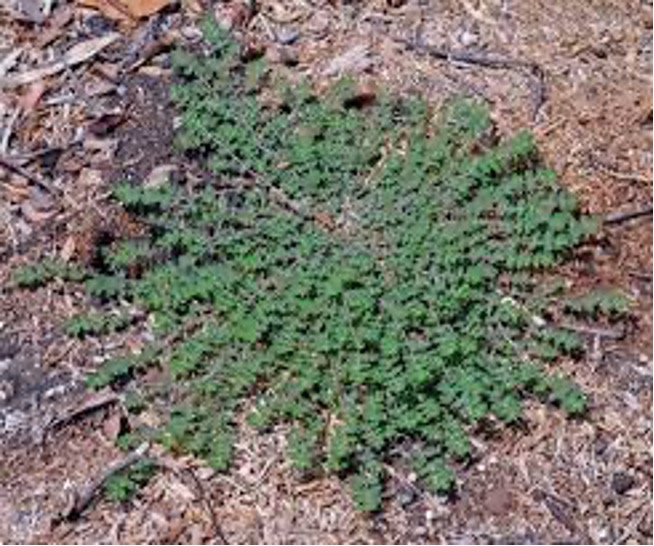Beat the bugs on your Euphorbia Ascot Rainbow and keep your plant thriving with expert tips!
The vibrant foliage and colorful blooms of the Ascot rainbow spurge (Euphorbia martinii ‘Ascot Rainbow’) make it a prized addition to many gardens However, like all plants, it can fall victim to various diseases that affect its health and appearance As a gardener, being able to promptly identify and properly treat diseases is crucial for maintaining the beauty and vigor of your Ascot rainbow spurges. In this article, we’ll discuss some of the most common Ascot rainbow spurge diseases, how to spot them, and effective treatment methods.
Powdery Mildew
One of the most prevalent fungal diseases of Ascot rainbow spurge is powdery mildew This disease thrives in humid, shady environments
Signs to look for:
- White powdery coating on leaves, stems, and flowers
- Distorted, curled, or yellowed leaves
- Stunted growth
Treatment
- Improve air circulation and reduce shade around plants
- Remove and destroy infected plant parts
- Apply fungicides like neem oil or sulfur early as prevention
- Avoid overhead watering to keep foliage dry
Powdery mildew spreads quickly, so be vigilant about monitoring your Ascot rainbow spurges for early signs. Prompt treatment is key before the disease can proliferate.
Root Rot
Excess moisture around the roots can lead to deadly root rot in Ascot rainbow spurges. This fungal infection causes the roots to turn brown and mushy.
Signs to look for:
- Wilting and drooping leaves and stems
- Slow growth
- Yellow, stunted leaves
- Mushy, rotten roots
Treatment:
- Allow soil to dry out between waterings
- Improve drainage by amending soil with compost or perlite
- Remove infected plants and discard diseased roots
- Treat remaining plants with fungicides as a preventive
- Water plants at the base to keep foliage dry
Catching root rot early before it spreads gives you the best chance of saving infected Ascot rainbow spurges. Take care not to overwater these plants.
Bacterial Leaf Spot
Bacterial leaf spot manifests as dark, water-soaked lesions on Ascot rainbow spurge leaves. These spots later turn brown or black.
Signs to look for:
- Small, dark, wet spots on leaves
- Lesions with yellow halos
- Leaves turning brown or black
- Leaf loss
- Poor growth
Treatment:
- Remove and destroy infected leaves
- Apply copper-based bactericides
- Avoid overhead watering and promote air circulation
- Reduce humidity around plants
- Disinfect gardening tools to prevent spread
Bacterial leaf spot can quickly defoliate Ascot rainbow spurges if left uncontrolled. Be vigilant about monitoring for early symptoms.
Botrytis Blight
The fungus Botrytis cinerea causes unsightly gray mold on Ascot rainbow spurge flowers, leaves, and stems. Prolonged wet conditions favor this disease.
Signs to look for:
- Fluffy gray mold on flowers and leaves
- Watersoaked lesions
- Withered, dying tissue
- Stem cankers
- Defoliation
Treatment:
- Remove and destroy affected parts promptly
- Apply fungicides containing chlorothalonil or thiophanate-methyl
- Improve air circulation around plants
- Avoid wetting foliage
- Reduce humidity and moisture on plants
Botrytis blight can quickly ruin the ornamental appeal of Ascot rainbow spurges. Be prepared to act aggressively to treat infections before they spread.
Rust
Rust fungal infections manifest as yellow, orange, brown, or black powdery growths on the undersides of Ascot rainbow spurge leaves. Severe infections cause leaf loss.
Signs to look for:
- Bright yellow, orange, or brown dusty spots on leaf undersides
- Dark black powdery growth on leaves
- Leaves turning yellow and dropping
- Bare, defoliated stems
Treatment:
- Remove and destroy infected leaves
- Apply fungicides early as a preventative
- Improve air circulation around plants
- Avoid overhead watering and wetting foliage
- Monitor for early symptoms
Rust thrives in warm, humid conditions. Keep a close watch on your Ascot rainbow spurges during summer for early signs of infection. Prompt treatment can help curtail rust before it damages plants.
By educating yourself on the most common Ascot rainbow spurge diseases, you can catch infections early before they severely impact your plants. Routinely inspect foliage and roots for disease symptoms. Promptly isolate and treat affected plants using organic or chemical controls suited to the disease. Keep plants healthy with proper cultural care and growing conditions to ward off infections. With vigilance and quick action, you can protect the beauty and vibrancy of your Ascot rainbow spurges.

Fortify Your Plant: Preventative Measures
Routine care is your plant’s armor. Ensure youre providing the right amount of water, light, and nutrients. A plant in peak condition is less inviting to pests.
Fungus Gnats and Fruit Flies: The Soil Lurkers
Adult fungus gnats and fruit flies hover around the soil, a sign of overwatering. These pests are more than a nuisance; they can harm your plant.
Check the soil for larvae, which look like tiny white worms. Their presence is a surefire sign that these pests have made your Euphorbia Ascot Rainbow home.
